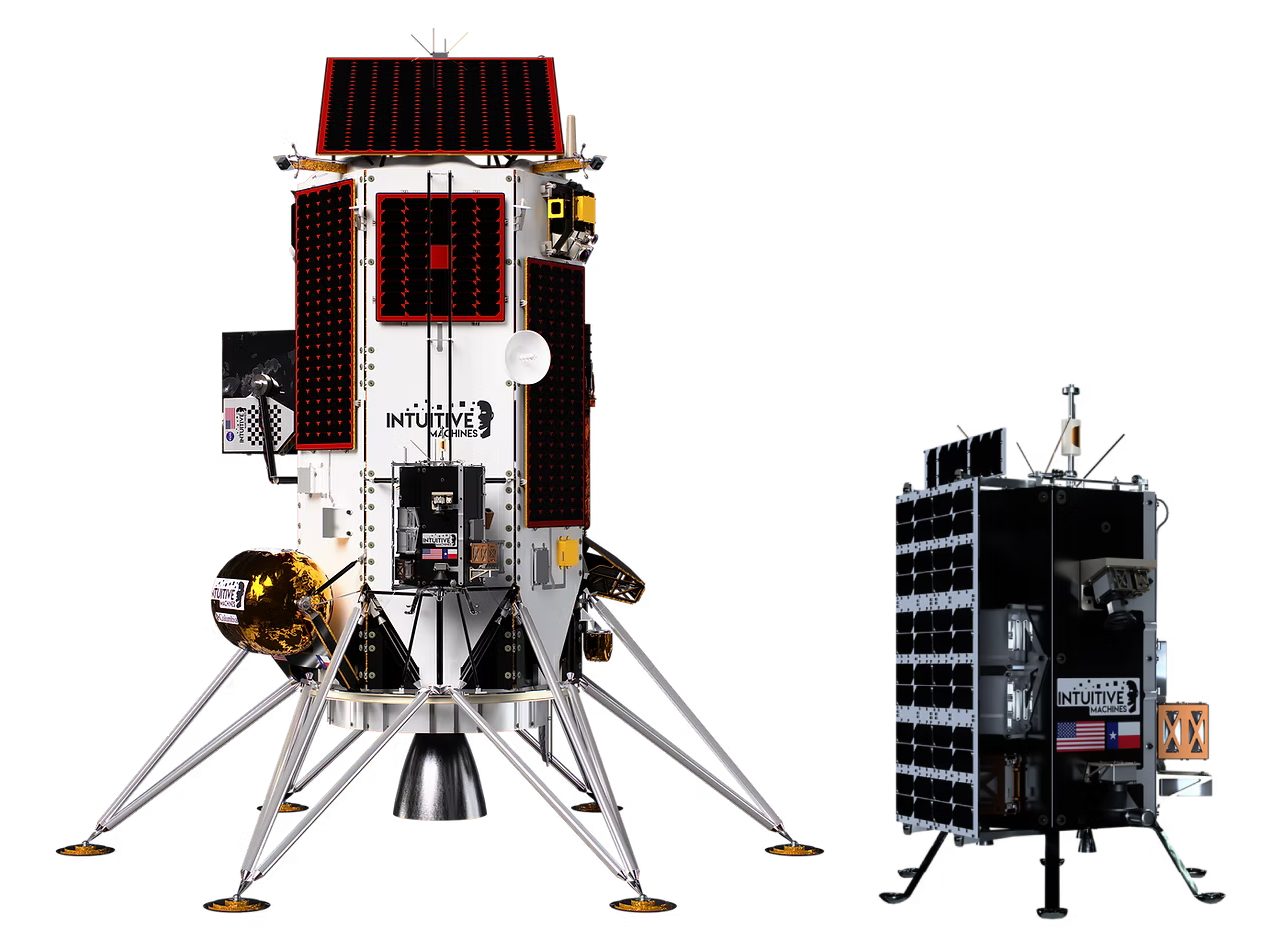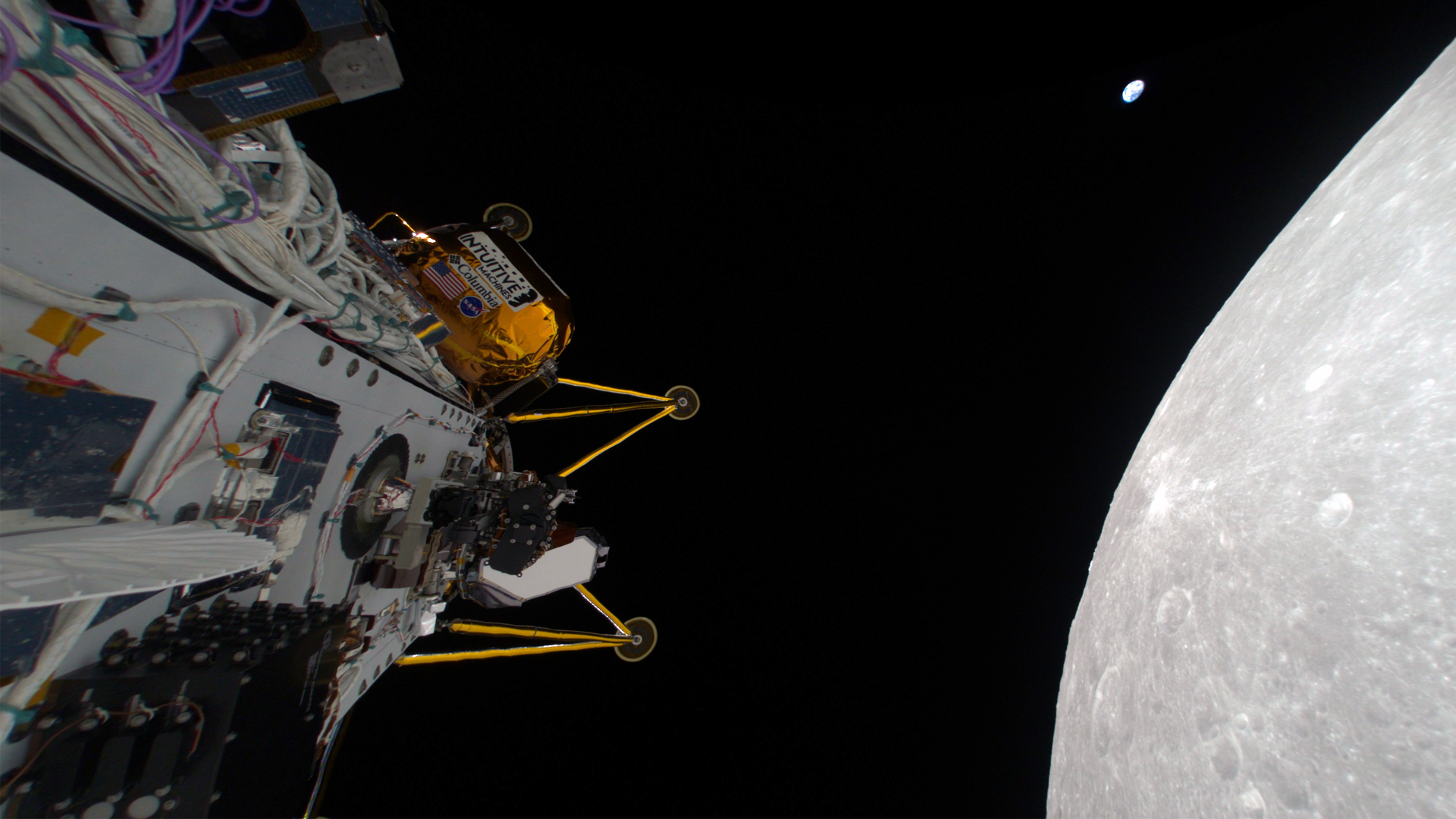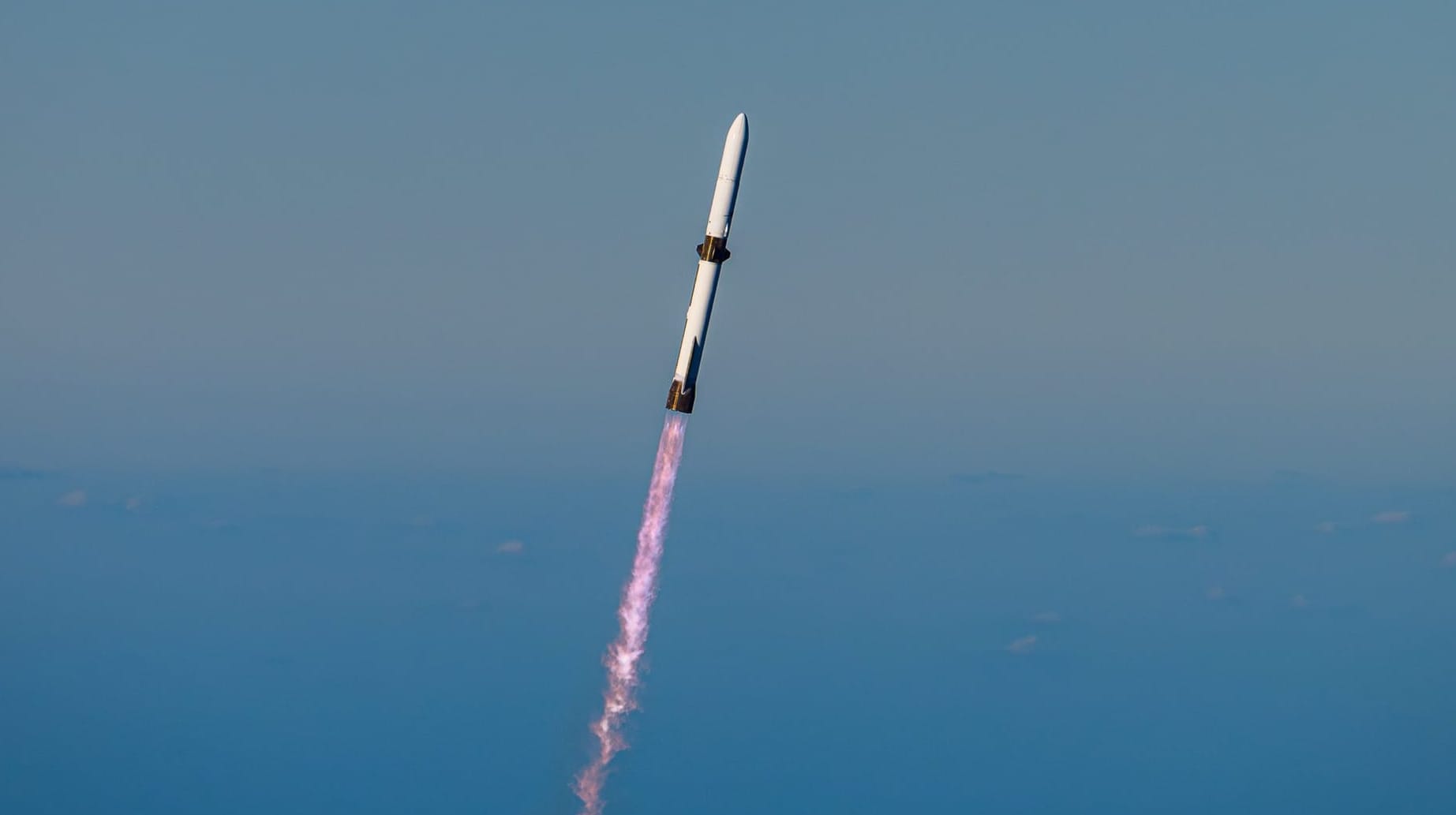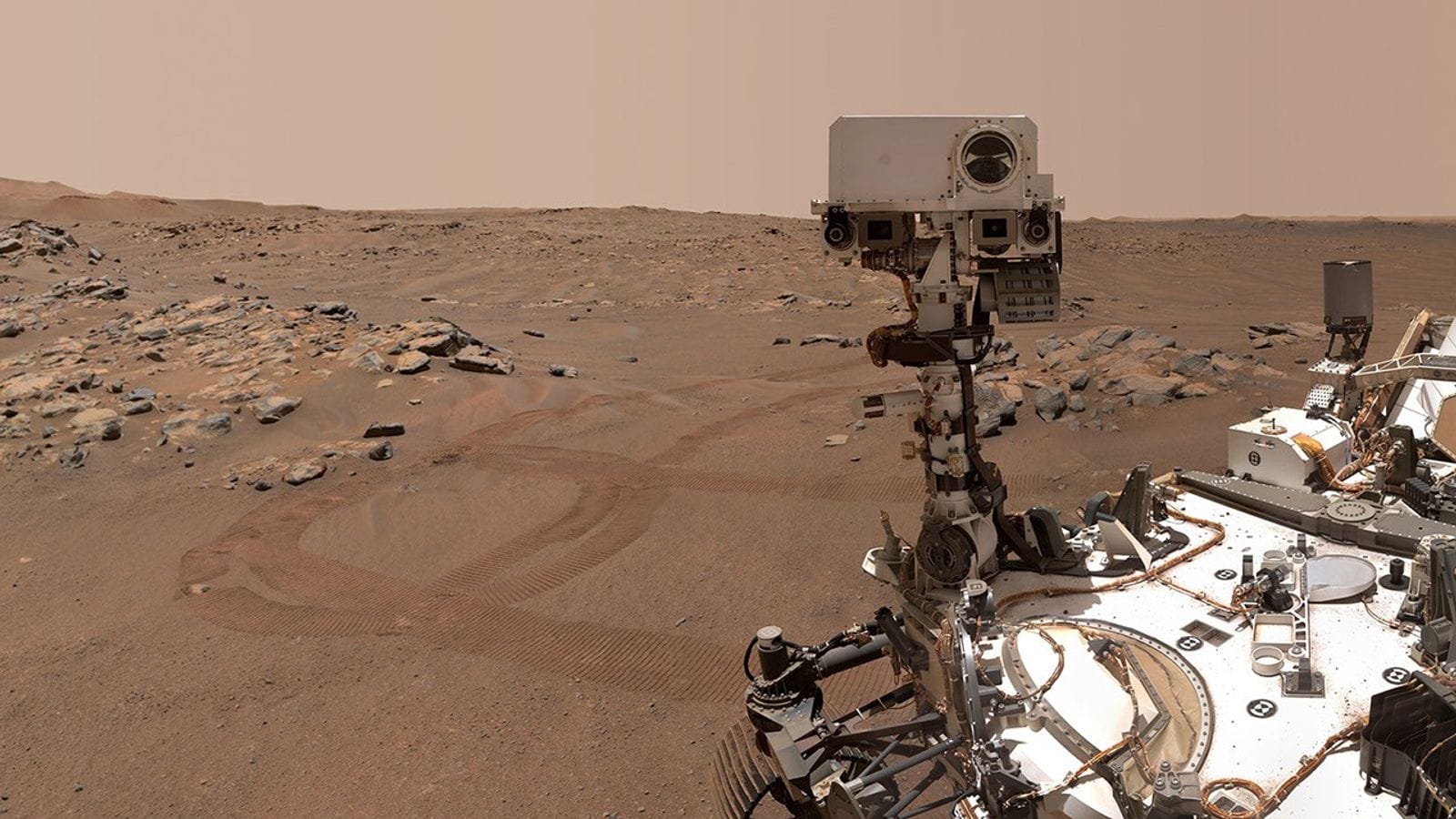Table of Contents
Intuitive Machines has landed its second Nova-C lander on the Moon's surface as part of its IM-2 mission on March 6th, funded by NASA's Commercial Lunar Payload Services (CLPS) initiative. This mission lifted off just over a week ago on February 27th atop of SpaceX's Falcon 9.
The company's second landing occurred at approximately 17:28 Universal Coordinated Time. But like its previous mission, this landing was not a total success.
Shortly after the expected landing, Intuitive Machines' Chief Executive Officer Steve Altemus confirmed that while the Nova-C lander was intact, it was not in its expected orientation and generating less power than desired. In an attempt to balance the spacecraft's power, various systems were deactivated. However, some external observers of the mission are beginning to believe Nova-C has run out of power.

With the sideways orientation, some payloads may run into issues depending on what side the lander is resting. One is PRIME-1 which is intended to drill a meter into the lunar regolith in order to test technologies ahead of crewed Artemis missions. Another is Lunar Outposts MAPP rover, which will likely need the lander to be upright to be deployed correctly ahead of roving across the surface. Additionally, Intuitive Machines Micro Nova Hopper may run into issues before it can hop between risky areas.
Other payloads, like those attached to the vehicle and the Yaoki rover, do not need the lander to be upright. All payloads do need power however.
Despite the off-nominal landing, the lander is believed to be near its expected landing site atop of Mons Mouton, five degrees from the Moon's south pole. Further refinement and confirmation is expected to come in a few days when NASA's Lunar Reconnaissance Orbiter flies over the landing site.
At a NASA hosted post-landing press conference, Steve Altemus declared that he was considering the IM-2 mission a success. He also noted that the vehicle was communicating better than after the IM-1 missions landing.
Update (14:40 UTC March 7th): Intuitive Machines did not operate the IM-2 spacecraft for long on the surface, with the company stating:
"Intuitive Machines, Inc., a leading space exploration, infrastructure, and services company, has announced the IM-2 mission lunar lander, Athena, landed 250 meters from its intended landing site in the Mons Mouton region of the lunar south pole, inside of a crater. This was the southernmost lunar landing and surface operations ever achieved."
"Images downlinked from Athena on the lunar surface confirmed that Athena was on her side. After landing, mission controllers were able to accelerate several program and payload milestones, including NASA’s PRIME-1 suite, before the lander’s batteries depleted."
"With the direction of the sun, the orientation of the solar panels, and extreme cold temperatures in the crater, Intuitive Machines does not expect Athena to recharge. The mission has concluded and teams are continuing to assess the data collected throughout the mission."
"This southern pole region is lit by harsh sun angles and limited direct communication with the Earth. This area has been avoided due to its rugged terrain and Intuitive Machines believes the insights and achievements from IM-2 will open this region for further space exploration."
What payloads are onboard?
Various payloads from NASA and private companies are onboard Nova-C for the IM-2 missions, those payloads are:
- PRIME-1 (Polar Resources Ice Mining Experiment 1) from NASA's Kennedy Space Center will demonstrate drilling into the Moon’s surface where it lands, drill down to one-meter below the surface, and use a mass spectrometer to look for the possible presence of volatiles. The PRIME-1 payload is a two-instrument suite made up of a meter-long drill (TRIDENT, The Regolith Ice Drill for Exploring New Terrain) and a mass spectrometer (MSolo, Mass Spectrometer observing lunar operations).
- LRA (Laser Retro-reflector Array) from NASA's Goddard Space Flight Center is a collection of eight approximately half-inch retro-reflectors, a unique collection of mirrors that is used for measuring distance, mounted to the lander. The mirror system reflects laser light directly backward to the orbiting spacecraft that emitted the laser light to precisely determine the lander’s location on the surface of the Moon.
- Nokia Lunar Surface Communications System aims to demonstrate that cellular technologies can offer dependable, high-capacity and efficient connectivity and communication capabilities for both crewed and uncrewed lunar and planetary missions for tasks including voice, video, data communication, telemetry and biometric data.
- Yaoki Rover is a small, lightweight rover from Dymon Co. Ltd. that will examine and demonstrate mobility and adaptability on the lunar surface close to the lander. High-level objectives from the YAOKI rover are to capture images of the lunar surface while maneuvering quickly and efficiently within a 50-meter radius of the lander. The rover also will demonstrate the versatility of the design, which will enable it to be dropped in any orientation without a mechanism.
- Freedom is part of Lonestar Data Holdings' plans to provide global
backup, global refresh, and global restore, by establishing the first physical data center beyond Earth, offering Disaster Recovery as a Service (DRaaS), premium data backup services, and edge processing capabilities from the ultimate edge, cislunar space and the lunar surface. Freedom is serving a host of data storage and edge processing customers. - MAPP (Mobile Autonomous Prospecting Platform) Rover is a small rover from Lunar Outpost that uses visual cues and sensors to autonomously navigate and avoid hazards, ensuring reliable performance in the challenging lunar environment. Its specialized wheels and rocker arm suspension allow it to traverse difficult terrain with precision, granting access to previously unreachable regions.
- Omni-Heat Infinity and Omni-Shade Sun Deflector is part of Intuitive Machines' partnership with Columbia Sportswear. Omni-Heat Infinity is a heat-reflective insulation used across the spacecraft, Omni-Shard Sun Deflector is applied on select areas to prevent overheating from solar radiation.
- LRAD (Lunar Radiometer) will study surface temperatures at the Moon’s South Pole, particularly in permanently shadowed regions where water ice may be stable. Developed by the Institute of Planetary Research at DLR and Freie Universität Berlin, LRAD is integrated into Intuitive Machines’ Micro Nova Hopper, which will make a series of short flights across the lunar terrain to collect critical thermal data.
- PLWS (Puli Lunar Water Snooper) is a neutron spectrometer developed by Hungary-based Puli Space Technologies. This miniature instrument, weighing just 400 grams, will collect water ice indicator data from the Moon’s South Pole region. Mounted on Intuitive Machines’ Micro Nova Hopper, PLWS will conduct the first-ever direct surface measurements from a permanently shadowed crater, supporting critical in-situ resource utilization (ISRU) efforts for future lunar exploration.
- Micro Nova Hopper is a propulsive drone that is designed to land, deploy, and hop on the company’s IM-2 mission. The Micro Nova Hopper can accommodate up to 10 kg of scientific payloads and expand the exploration footprint for up to 25 kilometers from the initial landing location.
What is Nova-C?
Nova-C is Intuitive Machines' lunar lander spacecraft, developed by the company. On the lunar surface, the spacecraft stands 4.759 meters tall with its six landing legs making it 4.33 meters wide. Fully fuelled with liquid methane and liquid oxygen, Nova-C weighs 2,120 kilograms, with a single engine burning the fuel during major maneuvers.
Intuitive Machines claims Nova-C can deliver 130 kilograms of cargo to the lunar surface, such as rovers and surface hoppers.

Nova-C can also bring along a smaller spacecraft to explore harder to reach areas of the Moon. This spacecraft is known as Micro Nova and stands at 0.975 meters tall and 0.714 meters wide with its six landing legs, while weighing 39 kilograms. The spacecraft is powered by various small thrusters burning hydrazine, allowing the spacecraft to carry payloads weighing up to 10 kilograms into risky areas of the lunar surface, such as permanently shadowed craters.
Who is Intuitive Machines?
Intuitive Machines is an American company headquartered in Houston, Texas. The company was founded in 2013 by Stephen Altemus, Kam Ghaffarian, and Dr. Tim Crain. The company has performed two lunar landing missions with two more planned as part of its lunar program, which will provide lunar surface access, lunar orbit delivery, and communications at lunar distances.






